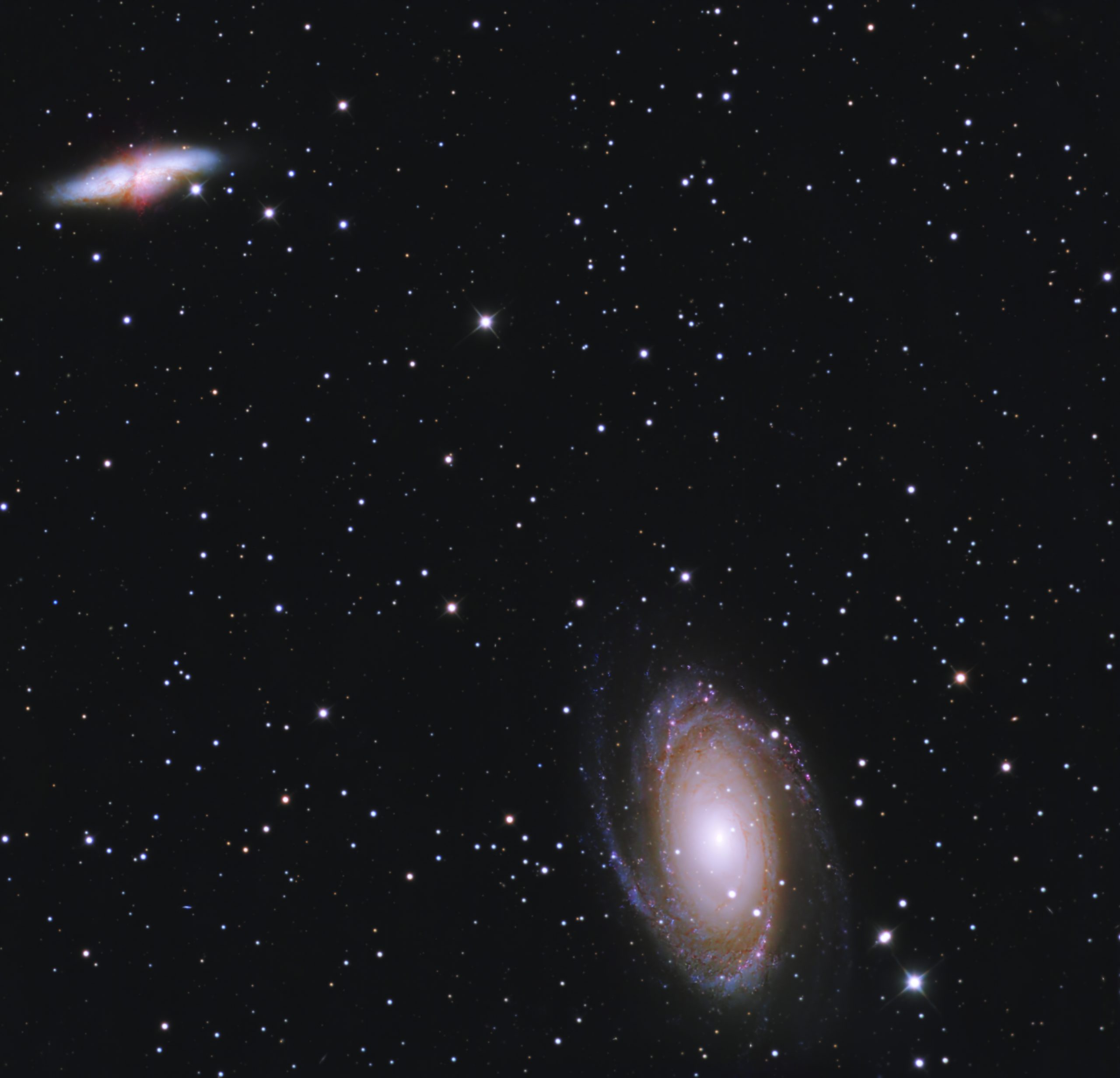M81 and M82

The galaxies M81 (NGC3031) and M82 (NGC3034) in Ursa Major, imaged through LRGB filters.
While M81 is a classic spiral, M82 was always regarded as an irregular galaxy. Recent analysis at infra-red wavelengths has however identified two spiral arms. These are not visible at normal wavelengths because of the very bright core – M82 is brighter than the Milky Way despite being less than half its diameter.
The brightness is caused by a burst of star-forming activity, thought to be the result of an interaction with neighbouring M81. The reddish streaks are dusty filaments.
Framing this image proved a challenge for my setup as the camera’s field of view was 49 arc-minutes square, just enough to frame the galaxies but closer to the corners of the field than I would prefer.
Calibration was also made more difficult by the need to combine three separate imaging runs, spaced over three years, with matching flats and darks. This led to some compromises in post-processing.
I have had at least two tries at processing this image . Originally I thought it looked OK but then decided M81 looked too red, and the background was too dark. Changing these aspects has, however, resulted in some loss of detail. I therefore think I need to take fresh data, perhaps imaging the objects separately and making sure to get a good H-a signal.
Exposure times were 11 hours Lum, 9 hrs Red and 8 hrs Green & Blue filters.
Equipment: Planewave CDK14 corrected Dall-Kirkham telescope, Finger Lakes Instrumentation P9000 CCD camera, Astrodon LRGB filters, Monster Moag off-axis guider with Starlight Xpress Ultrastar Pro guide camera.
Acquisition software: ACP Expert Scheduler, Maxim/DL. Image processing: PixInsight.

